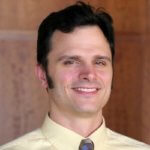Cardinal William H. Keeler was moderator for Catholic-Jewish Relations for the U.S. Conference of Catholic Bishops for much of the period (1977-2007) that I was the staff person for Catholic-Jewish relations for the USCCB.
We worked closely together during those years. Our work was at once theological and communal, since we were dealing with re-establishing after a nearly 2,000-year hiatus an open, trusting relationship between the “People of God, the Jews, and the People of God, the Church,” to use the wording of the Scriptures and of the Second Vatican Council.
The key document that guided us, as we began, was the short, revolutionary declaration of Vatican II, “Nostra Aetate” (“In Our Time,” which I humorously translated as Jews might understand it, as “It’s About Time!”).
Cardinal Keeler had been a “peritus,” or expert, at Vatican II so understood the significance of each phrase of the conciliar texts, and how they related to and reinforced each other.
Cardinal Keeler’s theological understanding was profound, and I was able aid him in understanding the Jewish community, since I had a doctorate in Hebrew studies from the Institute of Hebrew Studies of New York University. He also had a wonderful sense of humor, which served him well in dialogue with Jews and others. We were friends as well as colleagues. He baptized my daughter, Sarah, and she came to love him, calling him at one point, “Rabbi Keeler,” eliciting a hearty laugh.
Cardinal Keeler fostered dialogues between Catholics and Jews internationally and nationally, on the diocesan level and between local parishes and synagogues. To accomplish this we needed to bring together the major secular and religious Jewish organizations in a way that they could, together, represent the whole of American Jewry. The Jewish religious groups (Reform, Conservative, Orthodox and Reconstructionist) came together to form the National Council of Synagogues, while the Jewish communal groups such as the American Jewish Committee and the Anti-Defamation League of B’nai B’rith joined in as equal partners.
Our first meetings were held annually at the University of Notre Dame, but evolved after a few years into two meetings a year, one in Washington or Baltimore and one in New York.
The meetings had a focus, with papers given on a particular topic, usually regarding social and charitable traditions, as there is much in common given our shared Scriptures. This social focus also reassured Jews that our meetings would not be used to attempt to convert Jews. Cardinal Keeler was very sensitive to this, since he was an historian and understood the lingering effects that centuries of Christian attempts to convert Jews, all too often by force, have on the Jewish memory to this day.
Often the meetings provided a place where Jews could raise concerns that they had with a variety of issues, some of which were quite controversial.
To give just one example, there was the crisis over “the Auschwitz Convent.” A well-intentioned group of nuns set up a cloistered convent in an abandoned building adjacent to the death camp, with the purpose of praying for the thousands of Jews and others who were murdered there. They put up a cross in the garden of their convent. The cross, to Jews, had over the centuries become a very negative symbol to Jews, reminding them of the slaughter of upwards of 8,000 Jews by the Crusaders in 1096 in the Rhineland Valley of what was to become modern Germany.
What Catholics saw as a positive effort of the good sisters Jews felt was an attempt by the church to steal the Jewish memory of those who were killed – by baptized Christians – in the death camp and to turn the graveyard of so many of their fellow Jews into a Christian cemetery. Cardinal Keeler played a key role in communicating Jewish concerns to the Holy See and to European bishops so that they would understand why Jews were so upset. Ultimately, the convent was relocated farther away from Auschwitz and the nuns established a place of dialogue there so that visiting Christian and Jewish groups could learn the full history of what happened there.
Cardinal Keeler also was very active in moving the U.S. bishops’ Committee for Ecumenical and Interreligious Affairs to pass statements that helped dioceses to implement official Vatican statements on Catholic-Jewish relations on the local level, ranging from guidelines for Catholic textbooks and parochial school education to dramatizations of the passion.
USCCB statements gave guidance to how seminaries might prepare priests to preach in a way that would not be negative toward Jews and Judaism, and remind parishioners that Jesus lived and died a pious Jew of his time.
So important to Catholic-Jewish relations is the work of Cardinal Keeler that I put together a volume of his works, so that his great legacy would be preserved for future generations, using as a title a favorite phrase of his as an historian: “Memoria Futuri, Catholic-Jewish Dialogue Yesterday, Today and Tomorrow: Texts and Addresses of Cardinal William H. Keeler, Selected and Edited by Eugene J. Fisher (Paulist Press, Stimulus Books, Mahwah, New Jersey, and New York, 2012).
The Catholic Church universally and in America is still, as Cardinal Walter Kasper once said, with Cardinal Keeler’s full agreement, only at “the beginning of the beginning” of what needs to be done not only to cleanse away the negatives of the past but to establish a future for the Jewish people and the Catholic Church so that e can, together, respond and live up to the challenge of being, each and together, the People of God in and for all humanity.
Read more about the life of Cardinal Keeler here.
Copyright ©2017 Catholic News Service/U.S. Conference of Catholic Bishops.

